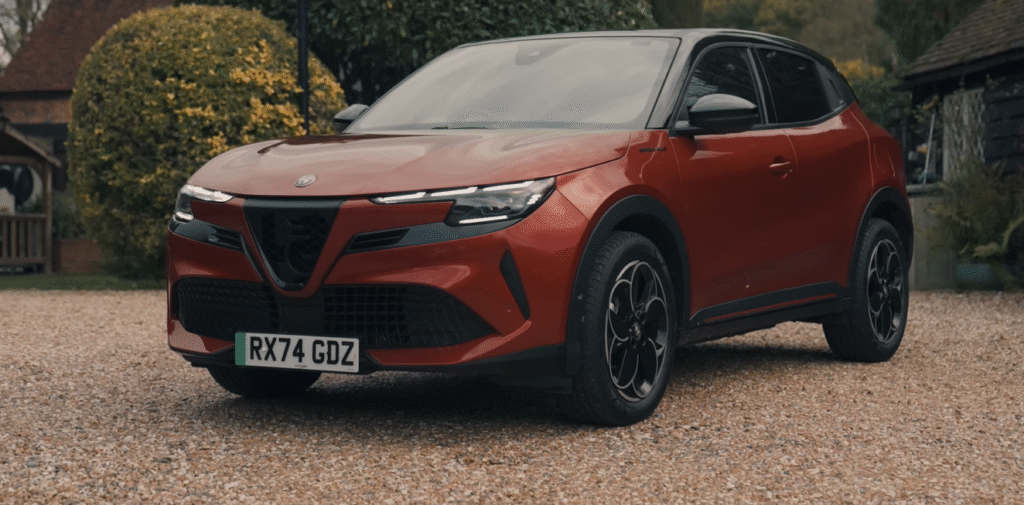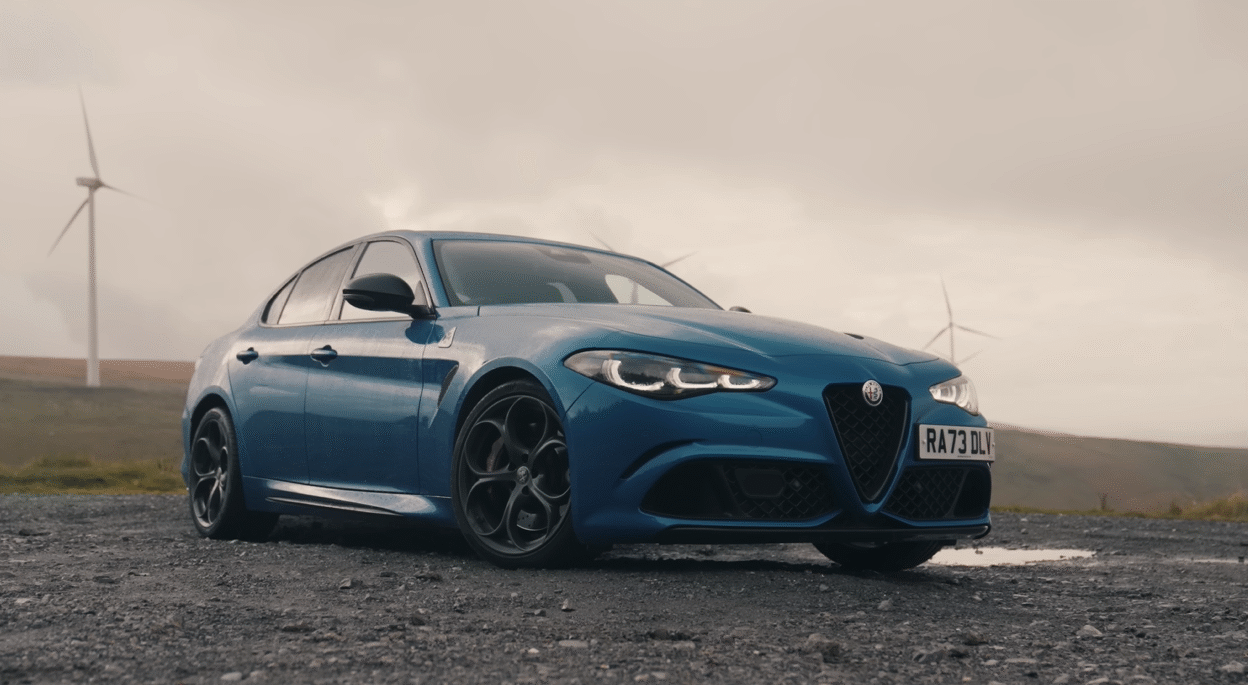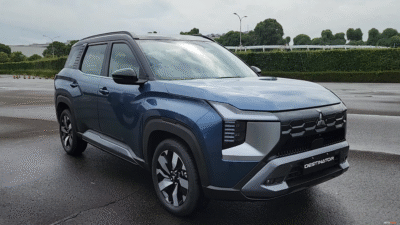Ten years ago, in 2015, Alfa Romeo did something that sounded like corporate suicide. They took a brand that had been missing from the performance world for two decades, hired ex-Ferrari engineers, borrowed a twin-turbo V6 originally developed for Maserati, and shoe-horned it into a mid-size sedan that weighed less than most modern hot hatches.
The Giulia Quadrifoglio was born — 510 hp, rear-wheel drive, perfect 50:50 weight distribution, carbon propshaft, active aero, and a face that looked like it wanted to fight you in a Milanese alley at 3 a.m.
Critics said it would never sell. They said the reliability would be laughable. They said BMW and Mercedes had nothing to worry about.
They were wrong on every single count.
Fast-forward to 2025. Production in Europe officially ended in September. The U.S. U.S. allocation is gone. Alfa Romeo’s CEO has promised a “return” in 2026, but the next car will ride on the STLA Large platform, will almost certainly gain hybrid assistance, and will be heavier, quieter, and safer.
That means the 2025 model year is the final pure example of the greatest driver’s super-sedan of the modern era. This isn’t just a facelift. It’s a full-stop. A mic-drop. A love letter written in 98-octane and burnt rubber.
And I’ve just spent seven days, 1,800 kilometres, and four sets of rear tyres saying goodbye the only way that feels right: with the DNA switch in Race, the windows down, and the V6 howling like Pavarotti on his final encore.
Engine & Performance — A Ferrari Heart Beating in an Alfa Chest
Let’s get the numbers out of the way first:
- 2.9-litre twin-turbo V6 (90° architecture derived from Ferrari F154 V8)
- 520 PS (513 hp) @ 6,500 rpm
- 600 Nm (443 lb-ft) from 2,500–5,500 rpm
- 0–100 km/h (62 mph) in 3.9 seconds
- Top speed 307 km/h (191 mph)
- Curb weight ~1,600–1,620 kg depending on spec
But numbers are meaningless here. This engine doesn’t live on a spec sheet — it lives in your ribcage.
From idle it crackles and burbles like a caged animal. Touch the throttle and the turbos spool with a whistle that turns into a shriek as the revs climb past 4,000 rpm. By 6,500 rpm it sounds like Maranello and Modena had a street fight and the V6 won.
There is no hybrid lag. No electric torque-fill smoothing out the edges. Just a glorious, violent wave of mechanical urgency that pins you into the Sparco seats and keeps building until the limiter politely suggests you shift up.
In a world where 700 hp family SUVs feel fast in a straight line but numb everywhere else, the Giulia reminds you that 520 hp delivered instantly, through the rear axle only, is more than enough to make grown adults giggle like children.
On a damp, greasy B-road the traction control light flickers like a disco. And that’s exactly how it should be.
Handling & Steering — The Last Analogue Super-Sedan
If you’ve never driven a Giulia Quadrifoglio hard, you haven’t truly experienced modern steering.
The rack is so fast (11.8:1 ratio) that the first 10° of lock feels like thought control. Turn-in is instant, almost violent, yet the front axle communicates every pebble, every camber change, every patch of standing water through the Alcantara rim.
Weight transfer is telegraphed so clearly that you can feel the car rotating before it actually does. The rear end doesn’t just follow the front — it dances with it.
Because it’s rear-wheel drive only, the Quadrifoglio is always balancing on the edge of oversteer. In the wet it’s a constant conversation:
- Too much throttle mid-corner? The tail steps wide, gently, predictably.
- Lift off? It tucks in like a rally car on steroids.
- Trail-brake? The nose dives and the rear pivots like it’s on a string.
This isn’t a car that hides its limits with electronic nannies. It shows you the cliff edge, then trusts you not to fall off.
And when you get it right — when throttle, steering and brakes are perfectly balanced — the Giulia flows through corners with a fluidity that modern all-wheel-drive performance sedans simply cannot match. It feels lighter than its weight, smaller than its dimensions, and far, far more alive than anything wearing an M or AMG badge today.
The Mechanical LSD — The Update That Matters Most
For years the Achilles’ heel of the Quadrifoglio was its electronic limited-slip differential. Fantastic for the road, but after three hot laps it would overheat and go open, turning your track weapon into a smoky drift machine with no control.
2025 fixes that forever. Alfa has fitted a proper mechanical limited-slip differential — the same philosophy used in the old 8C and 4C.
The difference is night and day. You can now commit to full-throttle corner exits without the diff closing down. Power-oversteer becomes predictable, repeatable, and — most importantly — endless. The car rotates cleaner, holds slides longer, and feels more planted when you eventually straighten up.
It’s a love letter to enthusiasts who complained for years. Alfa listened. And in the final year of production, they made their masterpiece even better.
Exterior Design — Beauty That Still Stops Traffic
Objectively, the Giulia is one of the most beautiful four-door cars ever made. Subjectively? It’s perfect.



The 2025 refresh brings:
- New matrix LED headlights with the “3+3” DRL signature from the Tonale, sharper lower air intakes, and a slightly more aggressive Scudetto grille. But the proportions remain untouched — long bonnet, cab-rearward stance, muscular haunches, and that perfect fastback roofline.
In Rosso Competizione or Misano Blue it looks like rolling sculpture. In Verde Montreal (the hero colour) it looks like Italy threw up pure sex appeal on four wheels.
People still stop and stare. Phone cameras still come out at traffic lights. Ten years on, it has not dated a single day.
Interior & Daily Usability — Drama Over Practicality
Slide inside and you’re greeted by:
- Sparco carbon bucket seats (optional, but mandatory for the full experience)
- Alcantara-wrapped dashboard and door cards
- Carbon fibre everywhere
- That gorgeous start button on the steering wheel



The 2025 update adds a cleaner 12.3-inch digital cluster, slightly faster infotainment, and improved Level 2 ADAS. But let’s be honest — you’re not buying this for Apple CarPlay response times.
Rear legroom is tight for six-footers. Boot space is average. The ride on 19-inch wheels and Pirelli P Zero Corsas is firm enough to rattle your teeth on British roads.
And none of that matters. Because every time you press the start button, the V6 barks into life and the whole cabin vibrates with promise. Because every time you clip a perfect downshift with those metal paddles, you grin like an idiot. Because this is a car that makes the school run feel like qualifying at Monza.
On the Road — A Week of Pure Addiction
I drove it from London to the Lake District and back. Motorway cruising in Natural mode is surprisingly refined — 28–30 mpg if you’re gentle, exhaust burbling quietly. But flick the DNA switch to Dynamic and the throttle sharpens, the dampers firm up, and the exhaust opens into full baritone.
On empty Cumbrian mountain roads I left it in Race the entire day. The mechanical diff allowed heroic corner exits. The steering told me exactly when the front tyres were about to let go. The V6 screamed to 7,200 rpm on every straight.
I came home with four bald rear tyres, an empty tank, and the biggest smile I’ve had in a car this decade.
Even in pouring rain the Giulia remained approachable — the chassis balance is so good that you can drive at 9/10ths without ever feeling frightened. It teaches you, it rewards you, it forgives you. And when you finally nail a sequence of corners perfectly, it feels like you’ve co-written a symphony with 520 horsepower.
The Hard Truth — This Really Is the End
The next Giulia will be built on Stellantis’ STLA Large architecture. It will have at least 700 hp combined. It will do 0–100 km/h in under 3 seconds. It will be silent when you want it to be.
But it will never again:
- Weigh under 1,700 kg
- Have hydraulic-steering levels of feel
- Let you switch everything off and truly dance with oversteer
- Sound like this V6
This is the last rear-wheel-drive, pure-petrol super-sedan from a mainstream manufacturer. Full stop.
Final Verdict & Buying Advice
Rating: 10/10 — Flawed, expensive, impractical, and absolutely perfect
If you can afford one — buy it now.
Current prices (November 2025):
- UK new stock: £85,000–£105,000 (rapidly disappearing)
- UAE new stock: AED 399,000–465,000
- 2022–2024 used: already holding or rising in value
Specification to hunt for:
- Carbon ceramic brakes
- Sparco seats
- Mechanical LSD (2024+ cars)
- Akrapovič exhaust if you can find it
Yes, it will cost more to run than an M3 Competition. Yes, the dealer network isn’t perfect. Yes, the rear seats are tight.
But none of that will matter when you’re sideways out of a roundabout at 7,000 rpm with the V6 howling and your passenger screaming with joy.
Top 5 Reasons NOT to Buy the 2025 Alfa Romeo Giulia Quadrifoglio
The Last Line
The 2025 Alfa Romeo Giulia Quadrifoglio isn’t just the end of an era. It’s proof that — for one brief, glorious decade — Italy built the best driver’s car on earth.
Find one. Drive it like you stole it. And when the tank is empty and the tyres are smoke… Say thank you.
Because cars like this don’t die. They become legends.
Grazie, Giulia. You were worth every heartbeat.



